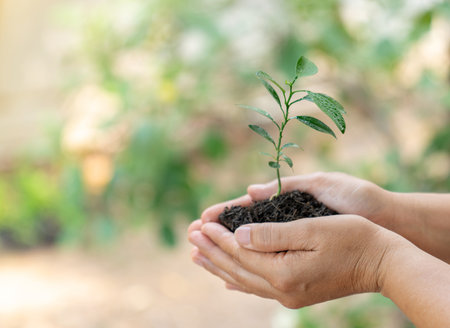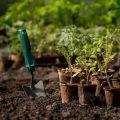1. Getting Started: Understanding Your Local Climate and Soil
Before diving into the sowing, transplanting, and harvesting calendar, it is crucial to appreciate the diversity of climates and soils across the UK. From the cool, damp conditions of Scotland to the milder winters found in the South West, each region presents unique challenges and opportunities for vegetable growers. Recognising these variations is the foundation of a successful gardening year. Soil types can range from heavy clay to sandy loam, each demanding a tailored approach to cultivation and crop selection. Taking time to observe your own garden’s microclimate—whether it’s sheltered from wind, prone to frost pockets, or benefits from extra sunshine—will guide your choices throughout the season. By matching your growing plans with local climate patterns and soil characteristics, you can optimise germination rates, promote healthy plant development, and ultimately achieve more reliable harvests. This attention to your immediate environment underpins every step of an effective annual vegetable calendar in Britain.
2. Sowing Seeds: Month-by-Month Guidance
Successfully sowing vegetables in the UK requires careful attention to timing, location, and environmental conditions. The British climate can be unpredictable, so understanding the best months for indoor and outdoor sowing is essential for strong germination and robust plants. Below, find a practical month-by-month guide with tips on how to get your seeds off to the best possible start.
Indoor vs Outdoor Sowing
Some crops thrive when started indoors, allowing you to extend the growing season and protect young seedlings from late frosts. Others prefer direct sowing outdoors as soon as conditions allow. The table below outlines popular UK vegetables and their recommended sowing times:
| Vegetable | Indoor Sowing (Month) | Outdoor Sowing (Month) |
|---|---|---|
| Tomato | Feb-Mar | – |
| Runner Bean | Apr-May | May-Jun |
| Lettuce | Feb-Mar | Mar-Aug |
| Carrot | – | Mar-Jul |
| Cabbage (Summer) | Feb-Mar | Mar-May |
| Courgette | Apr-May | May-Jun |
Sowing Tips for Optimal Germination
- Use fresh, high-quality seed compost for indoor sowing and ensure trays or modules are clean to prevent disease.
- Sow seeds at the recommended depth—generally about twice their diameter—and gently firm the compost over them.
- Maintain steady warmth indoors using a heated propagator or a sunny windowsill; most seeds germinate best at 18-21°C.
- If sowing outdoors, wait until the soil is workable—not waterlogged or frozen. Use a cloche or fleece to warm the soil in early spring if needed.
Monthly Quick Reference Guide
- February: Start tomatoes, lettuce, and summer cabbage indoors.
- March: Sow carrots and lettuce outdoors under cover; continue indoor sowings.
- April: Sow runner beans and courgettes indoors; direct sow beetroot, radish, and peas outside.
- May: Harden off and transplant indoor seedlings outdoors after risk of frost passes; sow beans and courgettes outdoors.
- June–August: Continue succession sowings of salad crops like lettuce and radish for ongoing harvests.
This structured approach ensures you make the most of each growing season, giving your vegetables the best start whether you’re working with a garden plot or an allotment.
![]()
3. Transplanting for Success
Transplanting is a critical stage in the annual vegetable growing calendar, especially here in the UK where weather conditions can be unpredictable. Knowing when and how to move your seedlings from the comfort of the indoors or greenhouse to their final outdoor beds is key to ensuring a strong, healthy crop.
Hardening Off: Preparing for Outdoor Life
Before your seedlings brave the great outdoors, hardening off is an essential process. Start by placing trays of young plants outside in a sheltered spot for a couple of hours each day, gradually increasing their exposure to sunlight and wind over 7-10 days. This gradual acclimatisation helps toughen up tender stems and leaves, reducing transplant shock and improving resilience against changeable British weather.
Timing the Move: Dodging Late Frosts
The timing of transplantation varies depending on both the crop and your local microclimate. For most vegetables, wait until after the risk of late frosts has passed—often late May in much of England, though it may be earlier in the South or later in Northern regions. Always check your local forecast before transplanting; a rogue frost can undo weeks of careful nurturing. Keep fleece or cloches handy just in case temperatures dip unexpectedly.
Spacing: Giving Each Plant Room to Thrive
Correct spacing is often overlooked but vital for healthy growth. Crowded plants compete for light, nutrients, and water, making them more prone to disease. Follow guidance on seed packets or trusted gardening resources: for example, brassicas like cabbage benefit from 30-45cm between plants, while lettuces are happy with 20-25cm. Use a measuring stick or string lines to keep rows even—your future self will thank you at harvest time!
Handling Delicate Seedlings
Handle seedlings gently by their leaves rather than stems to avoid bruising or breakage. Water well both before and after planting out to help roots settle in. If possible, transplant on a cloudy day or in the evening to reduce stress from direct sun.
By mastering these transplanting techniques and tailoring them to our British climate, you’ll set your vegetable garden up for a season of robust growth and rewarding harvests.
4. Annual Harvest Calendar
Knowing exactly when to harvest your vegetables is just as important as sowing and transplanting. The UK’s varied climate means that different vegetables reach their peak at different times of the year, and harvesting at the right moment ensures the best flavour, texture, and storage life. Below is a month-by-month guide to help you get the most from your crops, including peak picking periods and practical harvesting techniques.
Month-by-Month Vegetable Harvest Guide
| Month | Vegetables Ready to Harvest | Peak Picking Tips |
|---|---|---|
| January | Kale, Leeks, Sprouts, Parsnips | Harvest after a light frost for sweeter flavour; pull parsnips gently to avoid breakage. |
| February | Kale, Leeks, Purple Sprouting Broccoli | Continue regular picking to encourage further cropping. |
| March | Spring Greens, Rhubarb (forced), Spinach | Pick young leaves for tenderness; rhubarb stalks should be firm and brightly coloured. |
| April | Asparagus, Radishes, Early Lettuce | Snap asparagus spears at ground level; pick radishes while still crisp. |
| May | Salad Leaves, Broad Beans, Early Carrots | Harvest salad leaves in the morning for freshness; pod beans when plump but not over-mature. |
| June | Peas, New Potatoes, Strawberries, Beetroot | Dig new potatoes as soon as they flower; pick peas regularly to promote further pods. |
| July | Cabbage, Courgettes, French Beans, Gooseberries | Cut courgettes small for best flavour; harvest cabbage heads before they split. |
| August | Sweetcorn, Tomatoes, Runner Beans, Onions | Pick sweetcorn when kernels exude milky sap; lift onions once foliage turns yellow. |
| September | Pumpkins, Maincrop Potatoes, Apples, Plums | Cure pumpkins in the sun before storage; dig potatoes on a dry day to avoid rot. |
| October | Celeriac, Swedes, Late Carrots, Autumn Broccoli | Larger roots store better; cut broccoli heads while florets are tight. |
| November | Kale, Jerusalem Artichokes, Parsnips (again) | Lifting artichokes carefully avoids damage; parsnips can be left in ground until needed. |
| December | Savoy Cabbage, Leeks, Brussels Sprouts | Sprouts taste sweeter after frost; harvest cabbage heads before heavy snow. |
Best Practices for Harvesting Vegetables in the UK Climate
- Timing Matters: Harvest during cool parts of the day—early morning or late afternoon—to retain moisture and reduce wilting.
- Avoid Wet Conditions: Picking when plants are wet increases risk of spreading disease.
- Use Sharp Tools: Clean and sharp knives or secateurs make cleaner cuts and reduce plant stress.
- Curing & Storage: For root crops like onions and potatoes, allow proper curing time in a dry location before storing to improve shelf life.
- Pace Your Picking: Regular harvesting encourages ongoing production—particularly with beans and courgettes.
- Taste Test: Don’t hesitate to sample—your palate is often the best indicator of peak ripeness!
The Benefits of Well-Timed Harvests
A well-planned harvest calendar maximises both yield and quality. By tuning into your garden’s natural rhythms and observing subtle seasonal cues—from leaf colour to firmness—you’ll enjoy tastier meals and more productive plots throughout the year. Each vegetable has its own ideal window; keeping this calendar at hand ensures you never miss out on your crop’s full potential. Happy picking!
5. Troubleshooting Common Challenges
Pests: The Persistent Nuisance
One of the perennial issues in UK vegetable gardening is the onslaught of pests such as slugs, snails, aphids, and cabbage white butterflies. These creatures can decimate young seedlings and established crops alike. To combat them, consider setting up physical barriers like copper tape or netting, which are especially effective against slugs and birds. Organic slug pellets and beer traps are also widely used by British gardeners. Companion planting—such as placing marigolds near brassicas—can deter certain insects naturally. Regular inspection and hand-picking of pests remain tried-and-true methods for maintaining plant health.
Diseases: Prevention Over Cure
The UK’s often damp climate creates ideal conditions for fungal diseases like blight, powdery mildew, and clubroot. Crop rotation is essential to prevent soil-borne pathogens from building up. Ensure adequate spacing between plants to improve air circulation, and water at the base rather than overhead to reduce moisture on foliage. Dispose of any diseased material promptly and avoid composting it. Using disease-resistant varieties can give you a head start against persistent problems.
Weather: Preparing for the Unpredictable
British weather is famously variable—late frosts in spring, sudden downpours in summer, or prolonged wet periods can all impact your vegetable calendar. Cloches and fleece offer protection against unexpected cold snaps, while raised beds help with drainage during wet spells. Water butts are invaluable during dry summers; collecting rainwater ensures your garden stays hydrated even under hosepipe bans. Keeping an eye on local forecasts enables timely action, such as bringing tender seedlings indoors or temporarily shading crops during heatwaves.
Poor Germination or Growth
If seeds fail to germinate or plants look stunted, check soil temperature and quality first—cold, compacted, or nutrient-poor soil is a common culprit in UK gardens early in the year. Use a soil thermometer to ensure optimal sowing conditions (usually above 7°C for most vegetables). Enrich your beds annually with well-rotted manure or compost to improve fertility and structure.
Cultural Practices for Ongoing Success
Regular crop rotation, interplanting flowers for beneficial insects, and timely weeding all contribute to a resilient vegetable plot throughout the year. Record-keeping—making notes each season about what worked and what didn’t—will help you refine your approach with each annual cycle.
When All Else Fails: Community Support
If you encounter persistent problems despite your best efforts, don’t hesitate to seek advice from local allotment societies or gardening clubs—a cornerstone of British horticultural culture. Sharing experiences with neighbours often uncovers simple solutions tailored to your local microclimate.
6. Seasonal Care and Soil Health
Maintaining a thriving vegetable plot throughout the year in the UK requires thoughtful attention to soil health, effective crop rotation, and diligent seasonal care. The British climate, with its cool, wet winters and variable summers, presents unique challenges and opportunities for growers. Here are practical recommendations to help you nurture your plot through each season.
Soil Management Strategies
Healthy soil is the cornerstone of a productive vegetable garden. Begin each season by assessing your soils texture and fertility. Incorporate well-rotted compost or farmyard manure in late winter or early spring to boost organic matter and improve structure. Avoid working the soil when it’s too wet, as this can lead to compaction—a common issue in UK gardens.
Mulching and Feeding
Apply organic mulches—such as straw, leaf mould, or wood chips—around young plants after transplanting. This helps retain moisture during dry spells, suppresses weeds, and slowly adds nutrients as it decomposes. Throughout the growing season, feed heavy feeders like brassicas with additional nitrogen-rich fertilisers, but be mindful not to overdo it; moderation ensures balanced growth without excess leafy top at the expense of roots or fruit.
Crop Rotation Essentials
Crop rotation is vital for preventing the build-up of pests and diseases while maintaining soil fertility. Divide your plot into sections for root crops (like carrots), legumes (peas and beans), brassicas (cabbages and broccoli), and alliums (onions and leeks). Rotate these groups annually so that no plant family occupies the same bed more than once every four years. This simple system disrupts pest life cycles and optimises nutrient usage.
Managing Green Manures
Sow green manures such as field beans or clover during autumn on beds that would otherwise be left bare. These cover crops fix nitrogen in the soil, improve structure, and prevent erosion during the wet winter months. Dig them in before they flower in spring to capture their full benefit.
Winter Preparations
The end of the growing season doesn’t mean abandoning your patch until spring. Clear away spent crops promptly to reduce overwintering pests and diseases. Spread a thick layer of compost or well-rotted manure across bare beds; earthworms will incorporate this into the soil over winter. Protect tender perennials with fleece or cloches as needed, especially in more exposed northern regions.
Planning Ahead
Use quieter winter months to plan next year’s sowing calendar and order seeds early—many British seed suppliers offer heritage varieties adapted to local conditions. Keeping a simple garden notebook helps track what worked well each year and which areas need improvement.
Conclusion: Sustaining Productivity Year-Round
By prioritising soil health, practising sensible crop rotation, and preparing for winter effectively, you’ll keep your vegetable plot healthy and productive through all seasons. These techniques are tried-and-tested by generations of British gardeners—and with a little observation and care, they’ll serve you well too.


